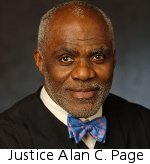1/25/2010
Minnesota Supreme Court Rules DUI Possible in Inoperable VehicleMinnesota Supreme Court upholds drunk driving conviction on a man asleep behind the wheel of an undriven, possibly inoperable vehicle.

The Supreme Court of Minnesota on Thursday upheld the drunk driving conviction of a man caught asleep behind the wheel of a vehicle that would not start. At 11:30pm on June 11, 2007, police found Daryl Fleck sleeping in his own legally parked car in his apartment complex parking lot. The vehicle's engine was cold to the touch, indicating it had not been driven recently. The keys were in the center console, not the ignition. Fleck admitted to having consumed around a dozen beers that night. Officers at the scene arrested him, and his blood alcohol level was found to be .18. A few weeks after Fleck's vehicle was impounded, a police officer tested the vehicle using the keys found in the car's center console.
"Although the key turned in the ignition, the vehicle would not start," Justice Alan C. Page explained in the unanimous decision.
Laws covering driving under the influence of alcohol (DUI) have evolved over the years to cover the situations where police find a parked, but recently driven, vehicle with a drunk behind the wheel. In the 1992 case Minnesota v. Starfield, the court found a drunk passenger sitting in a vehicle stuck in a ditch guilty of DUI, but not because it could prove she really was the one who drove and caused the accident. Instead, the court ruled that "towing assistance [was] likely available" creating the theoretical possibility that the immobile vehicle could "easily" be made mobile. These defendants have been charged under an expanded definition that suggests having "dominion and control" with the mere potential to drive is a crime. Intending to sleep off a night of drinking treated as the same crime as attempting to drive home under this legal theory which does not take motive into account.
As Fleck was an unsympathetic figure with multiple DUI convictions in his past, prosecutors had no problem convincing a jury to convict. The court took up Fleck's case to expand the precedent to cover the case of mere presence in an undriven -- and perhaps undrivable -- car into the definition of drunk driving. The court relied on Fleck's drunken claim that his car was operable to set aside the physical evidence to the contrary.
"Although the facts of this case are not those of the typical physical control case in which a jury can infer that the defendant was in physical control because he drove the vehicle to where it came to rest, a jury could reasonably find that Fleck, having been found intoxicated, alone, and sleeping behind the wheel of his own vehicle with the keys in the vehicle's console, was in a position to exercise dominion or control over the vehicle and that he could, without too much difficulty, make the vehicle a source of danger," Page wrote. "Based on the totality of the circumstances, the facts in the record, and the legitimate inferences drawn from them, we hold that a jury could reasonably conclude that Fleck was guilty beyond a reasonable doubt of being in physical control of a vehicle under the influence of alcohol and with an alcohol concentration of .08 or more."
Fleck's three prior convictions elevated his sentence to a felony for which the trial judge imposed four years in prison. A copy of the decision is available in a 90k PDF file at the source link below.


